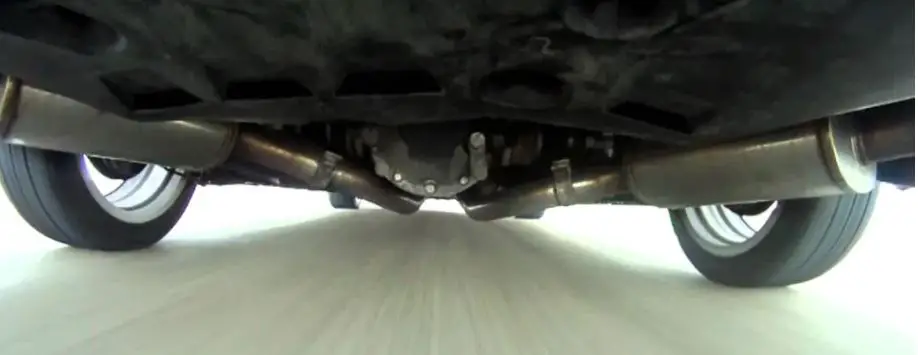Modern cars are complex machines, so healthy knowledge and experience is required to diagnose and fix their problems. The power output, efficiency, and electronics in a vehicle have increased in recent years with some modern and high-end cars have in excess of 500hp and over a hundred computer modules to monitor & control the operation of various parts including the suspension and the tires.
Computer-controlled suspension and tire operation may seem odd at first, but the presence of such electronics is crucial for overall optimal performance.
However, even a bunch of electronic aids cannot control and deliver all the power produced by some modified and high-performance vehicles. Generating astronomical power figures is one thing and precisely delivering them to the wheels is a whole another thing and, in many cases, people solely focus on the former part and forget about the latter one.
In reality, solving both equations is essential to get the most fun out of your high-performance car.
One problem that can occur in such cars is wheel hop!
What is Wheel/Tire hop?
Wheel hop or tire hop refers to the unusual and violent movement of tires within the tire wells. Under normal circumstances, it is perfectly normal for tires to display some movement since they have to absorb imperfections from the road, however, in the case of tire/wheel hop their motion becomes so erratic that it sends intense vibrations throughout the car.
Wheel hop is a relatively common occurrence in beefed-up cars and people in the car modification industry are well aware of this problem. In fact, wheel hops are a by-product of increased engine output and it is something that needs to be taken care of in order to reap the full benefits of a performance car, otherwise, all the effort might be in vain.
After all, what is the point of having a lot of power if you cant put that power down on the road.
Difference Between Wheel Spin & Wheel Hop?
Wheel hop might sound similar to a wheel spin, but it is actually quite different from a normal tire spin that people experience frequently. A closer look at both phenomena reveals a major difference between them.
Wheelspin only causes the tires to spin while in place, on the other hand, a tire hop involves a tire moving sideways from its original position. A wheel spin does not cause any vibrations, contrarily, a wheel hop causes brutal vibrations and rattles.
What Causes Wheel Hop?
The main cause of wheel hop is an imperfect or improper geometry of suspension and tires. A normal suspension setup and tires work perfectly fine for an average car; however, things dramatically change when normal suspension and tires are subjected to increased power output. Stock suspension bushings and joints are not designed to handle a huge amount of power that is delivered to the wheels via a tuned engine, therefore, they start deflecting the transitional forces back to the tires & other parts.
The sideway motion of the tires jolts the entire car and makes it nearly impossible for the tires to grip the surface.
It won’t be right to lay the entire blame on suspension. Tires also play a crucial role in eliminating an occurrence of wheel hop, but in many cases, the tires are either too thin or they aren’t warm or soft enough to hug the tarmac properly.
It is one of the reasons why drag cars are fitted with ultra-wide tires, because, a wide tire has more surface area in contact with the road and hence more friction and grip is generated. The tire compound and temperature also play a pivotal role in launching a performance vehicle. This is why soft tires are used and the drivers perform a burnout in order to properly warm them. A warm & soft tire is consequently an ideal candidate for launching a very high powered car.
Does Wheel Hop Only Affect FWD Cars?
Another interesting question that is frequently asked related to this topic is whether wheel hop occurs only in front-wheel drive (FWD) cars or can it also occur in a rear-wheel-drive (RWD) car? The simple & straightforward answer to this question is that BOTH drivetrains are susceptible to a wheel hop. Though, RWD cars are more likely to face this issue, since the car is pushed by the rear wheels which are already prone to traction issues in most RWD cars.
Also, most RWD cars are performance-oriented and hence are more liable to a tire hop. Having said that, you cannot ignore the chances of a tire hop in a front-wheel-drive (FWD) car. The main reason for this argument is that front-wheel-drive cars are more focused on providing better economy, their front-end suspension parts are not made to withstand the launch forces generated from a tuned-up engine.
Does Wheel Hop Damage a Vehicle?
Wheel hop can cause significant and costly damage to your car. The main suspension components have to take the most brunt and the damage can even extend to the rear axle, driveshaft, and tires. The violent movement of tires puts tremendous strain on the axle which can deform its geometry beyond the parameters which it was designed to safely operate in.
The drive axle, suspension joints & mounts can eventually break depending upon the intensity & frequency of wheel hop. Since the drive axle is attached to the transmission which in turn is attached to the engine, therefore, the mounts holding both these crucial organs of the car can also crack and eventually give up if the tire hop isn’t addressed.
How To Fix Tire Hop
One of the most common tried & tested remedies for wheel hop is to use a torque bar on the rear axle of a car that is facing this issue. The torque bar dampens the vibrations and only allows slight movement of the drive axle in case of a hard launch. The best thing about torque bars is that they are readily available and affordable, moreover, they can be easily installed using basic tools. The only drawback of this solution, as you may have guessed by now, is that it is only feasible for rear-wheel drive (RWD) vehicles.
Another obvious and simple solution is to use softer and wider tires. Such tires will hold themselves to the ground pretty well and can help to get rid of wheel hop. Nonetheless, the most long-lasting and widely acceptable solution is to install proper suspension components that are made to withstand extreme forces generated during a launch.
Such speciality components are a bit expensive, but they are well worth it in the long run and they offer the best possible resistance against wheel hop. Though, just like any other aftermarket component, upgraded suspension bushings and joints also have a drawback. They’ll reduce the ride quality which is kind of an obvious tradeoff when opting for a stiffer suspension setup. Other than that, the solution is as bulletproof as it can get, and it offers great value for your money and provides peace of mind in the long run.











